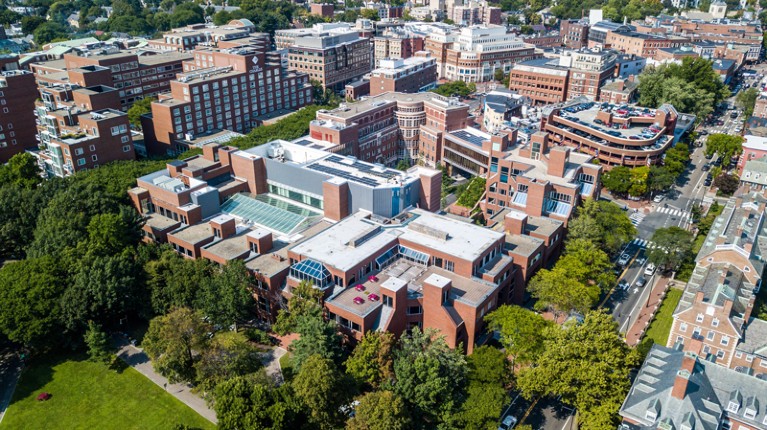
Faculty members from Harvard University’s John F. Kennedy School of Government in Cambridge, Massachusetts, often take leading roles in Democratic administrations. They need to do better in reaching out to the other side, too.Credit: Jeremy Graham/Alamy
How can universities increase social mobility? What can they do to reduce inequality? Many countries are aiming to boost the proportions of their populations that receive a university education. But with a revolution in online learning under way as a result of the COVID-19 pandemic, some governments, prompted by influential thinkers, will be questioning whether the present model of university education should survive once near-normality returns.
In The Tyranny of Merit (2020), philosopher Michael Sandel says that the United States, and the world, has not been served well by the US system, in which graduates from a small number of highly selective universities dominate the top of business and public life. Sandel should know. For four decades, he has taught at Harvard University in Cambridge, Massachusetts, including at the John F. Kennedy School of Government, whose faculty members have served as advisers or run agencies in Democratic governments in recent decades — including the present one.
Sandel says that, for 40 years, “meritocratic elites” have presided over stagnant wages for most workers, inequalities of income and wealth not seen since the 1920s, wars in the Middle East and the 2008 financial crisis. By contrast, he writes, the people who led the United States from 1940 to 1980 helped to win the Second World War, strengthened the US welfare state and dismantled segregation.
A parallel argument is advanced by David Goodhart at Policy Exchange, a think tank in London that is close to the present Conservative UK government. In Head Hand Heart (2020), he says that the “cognitive class” — his name for people who hold many academic qualifications — has reduced the pay and status of other skilled jobs, such as the caring professions, where learning often also takes place outside universities. Both books imply that universities are also worsening societal divisions, in part because students are more likely to vote for left-wing parties, and those schooled outside universities are more likely to lean to the right.
India must protect the independence of its landmark science agency
The books are lighter on practical recommendations, although they rightly call for all forms of work to be valued by policymakers. But both authors are influential, too, and there is a risk that some governments might draw on their thinking to reverse the long-term trend towards mass higher education.
It is true that there is a particular problem with the most highly selective institutions, especially privately funded ones. Worldwide, institutions that demand the highest entry qualifications tend to admit few young people from low-income families and under-represented communities. People both inside and outside these institutions are pushing for change, but it isn’t happening nearly as fast as it needs to.
However, it would be turning back the clock if policymakers used Sandel and Goodhart’s arguments to justify cutting university budgets, or if they decided to take steps to impede institutions’ continued growth and expansion. In high-income countries alone, the proportion of 25–34-year-olds who had a tertiary-level qualification grew from 35% in 2008 to 44% in 2018. Clearly, universities are increasingly popular. Rather than interfere with this trend, governments and universities alike must together strive to ensure that teaching and research serve all of society: people from all backgrounds, from undergraduates to lifelong learners, as well as industry, public and non-profit organizations. Many institutions are already working to meet the needs of more diverse populations.
Inequality must be tackled, and divisions in society must be defused. But both are complex, and cannot be attributed to a single factor. The expansion of higher education is key to bridging a divide that both authors have rightly identified: the gap between the wider population and often privately educated leaders — including policymakers and researchers. It is right that more young people and their parents are seeking an experience that was once the preserve of a small group. Rather than questioning that goal, governments must support universities in achieving it.

 India must protect the independence of its landmark science agency
India must protect the independence of its landmark science agency
 Building a university to deliver work-ready engineers
Building a university to deliver work-ready engineers





